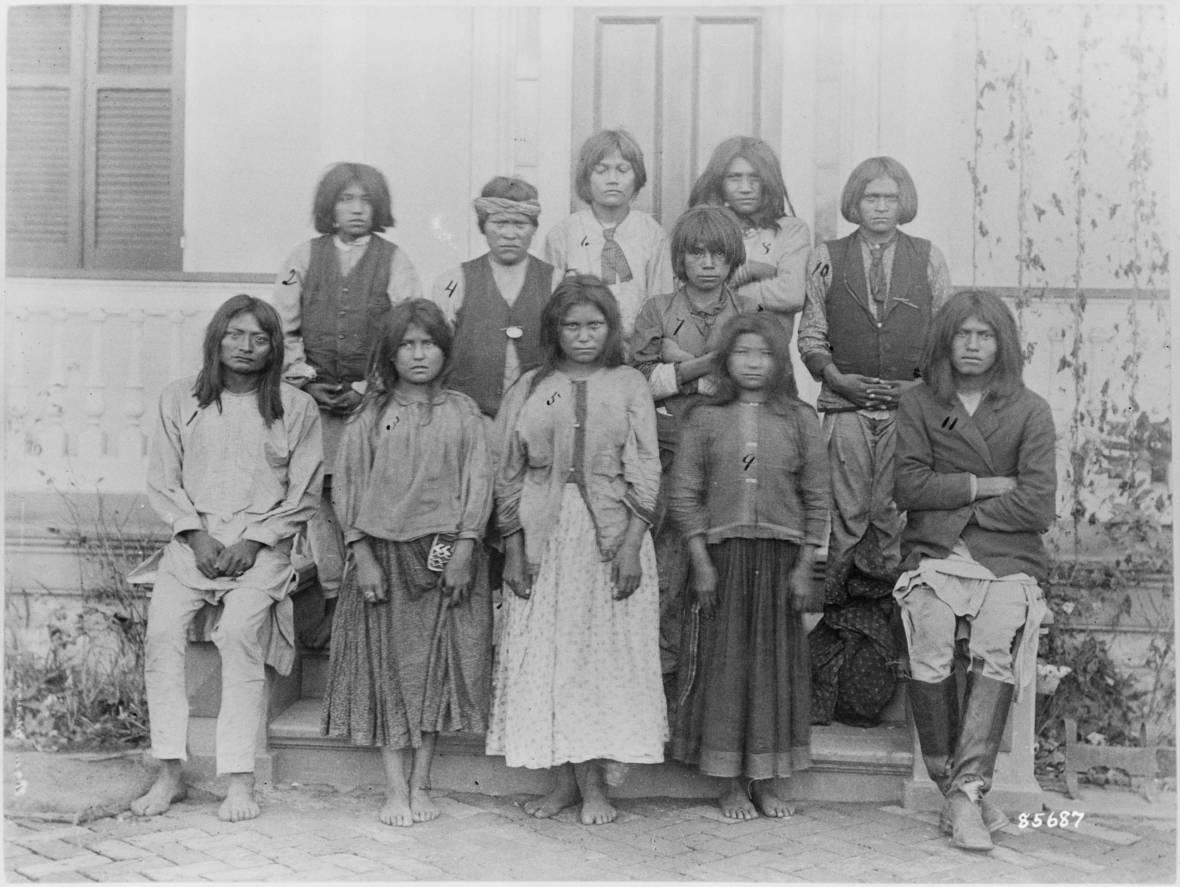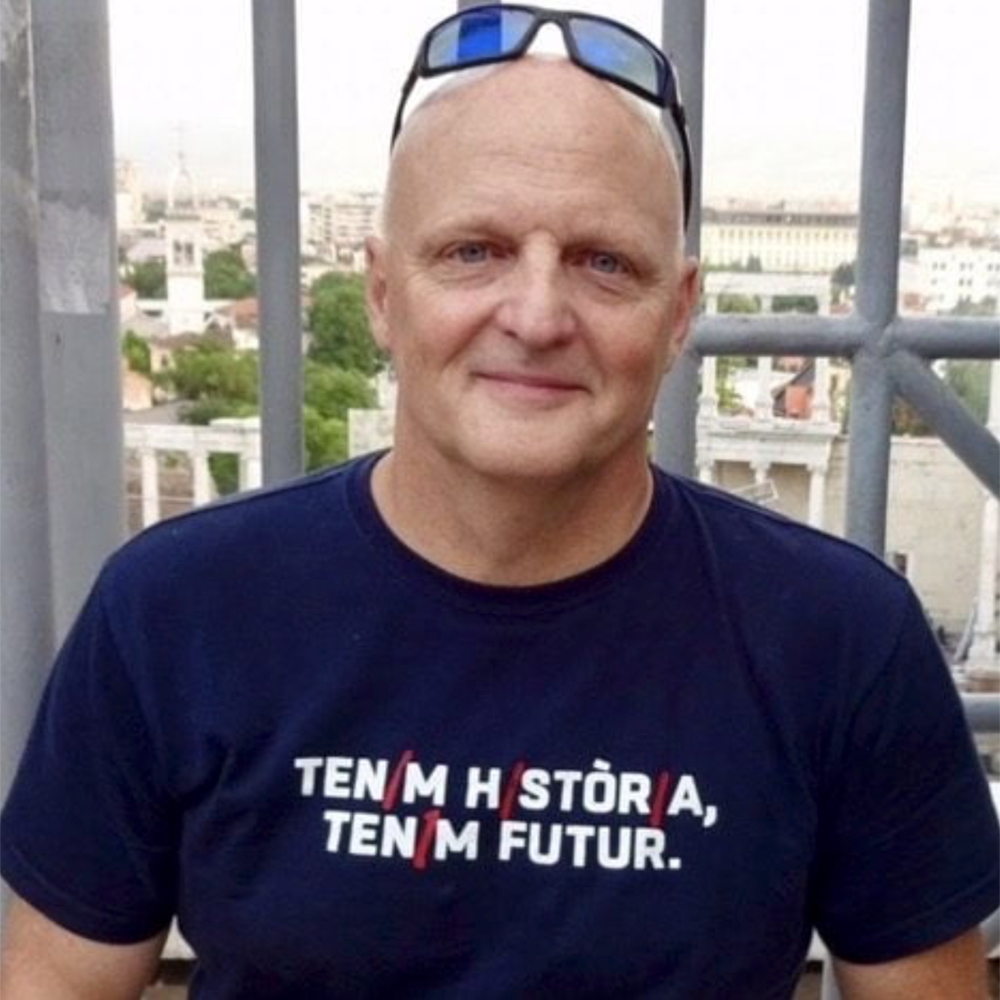If you want to understand a culture, it is imperative that you listen carefully to the stories that it—or perhaps more accurately—its story-telling elites most assiduously disseminate among the general population.
To speak of “story-telling” in this context is to speak not only of well-worn verbal tropes such as “America as a city upon a hill” or “America as generous purveyor of democracy,” but also the broader set of repeated semiotic inputs that greet the citizen in the course of his daily adventures.
A short while back I wrote a piece on the growing presence of speed bumps in our culture and sought in this very vein of semiotic analysis to explain what message—beyond the obvious goal of slowing drivers down—the authorities installing them in increasing numbers in cities and towns might be sending about how they view their fellow citizens, and how, in turn, their seemingly condescending gaze might affect the way citizens think about themselves and their relationship to power.
Looking at that essay I can understand that some might say something like “Interesting, but in the end pretty trivial.” And maybe they’re right.
But what if the dynamic under examination was not traffic control, but what every Big Thinker™ out there seems to tell us is the new “gold” of our age: information?
Might it be worth examining what our semiotic environment, shaped largely by our elites, seems to be telling us about what they see as our ability to successfully and democratically cope with the information explosion taking place all around us?
Four plus decades ago one of my favorite pastimes (no joke!) was perusing copy after copy of Soviet Life, the sumptuously illustrated English language propaganda organ of the USSR, in my public high school’s library. I found it exhilarating to catch glimpses of what so much else in my environment was telling me was perverse and evil.
I, of course, knew that it was propaganda and that the editors would only allow positive stories to enter into its pages. But I also knew from having listened for hours to the yarns of my grandmother, born on a potato farm in 1890, that every story has very valuable nuggets of truth alongside exaggerations and sometimes even outright fibs, and that it was my job to sort through it all and come up with my own version of the probable “reality” in each instance.
More important than this, however, is the fact that the people in charge at my high school obviously believed that by the age of fourteen I possessed these very same gifts of discernment!
In making Soviet Life openly visible in the periodical corner of the reading room, they were “telling” me and other students some very important things. The first, as suggested above, is that they did not consider us suckers-in-waiting who would get easily fooled by glossy, feel-good stories from across the ocean. The second is they believed in a very profound way that what they were “selling” us culturally was so inherently sound that it required neither ginned-up marketing for the home team, nor attacks on the enemy’s offerings to be accepted.
In short, they were culturally confident adults presuming the innate critical competence of their blossoming fellow citizens.
How different from the world we inhabit today, where our “betters” are constantly telling us—with their non-stop carping about so-called “foreign influence operations,” “misinformation,” and “disinformation”—that they not only consider our children, but most of us adults to be dopes largely devoid of basic skills in the areas of rhetorical, intellectual and moral discernment.
As anyone who has taught knows, learners will, if presumed to be intelligent and treated with respect, generally rise to the level of intellectual engagement and seriousness modeled by their mentors. Conversely, they will plod morosely along the path of least resistance and triviality when they detect the least amount of condescension and/or pretentiousness in the same people.
I have read that most inhabitants of the deep Amazon regions possess an encyclopedic knowledge of the traits and capacities of the super-abundant flora and fauna that surround them, and that they take great care in passing it on to their offspring. Given the crucial importance of this knowledge to the continued survival of their collectives, why shouldn’t they?
But what if one day, the mature members of such a collective, acting on the suggestions of outside experts, suddenly decided that taking the young out into the forest to teach them about their environment was “unsafe,” because unlike the children of the hundreds of generations that preceded them, these young people suddenly lacked the ability to face their fears of the unknown in order to discerningly catalog the realities of the physical world around them?
Seeing this, I don’t think any of us would have any trouble describing the goings on as a slow motion form of cultural suicide.
And among the more historically inclined observers, few would have trouble recognizing the correspondence between such a dynamic and the techniques used by colonialists since time immemorial; that is, to turn the natives into strangers in their own land by forcibly alienating their young from the stocks of indigenous wisdom and discernment that made possible their community’s survival as a unique and coherent entity through the ages.
“But Tom, we have never faced an information explosion like the one we are living through. Surely you can’t expect people to know how to successfully navigate their way through it alone.”
While the sheer amount of information generated today is probably unprecedented, its relative increase in the lives of most citizens is arguably not.
Before Gutenberg’s invention of the printing press in 1450, archivable information was the province of a vanishingly small percentage of the European population. By 1580 or so, however, over half of males in England and other northern European countries could read. And in the ensuing decades that number continued to grow vigorously. Talk about information explosions!
There were, of course, those who like our oh-so-concerned disinformation detectors today were convinced that giving common folk, with their primitive brains, relatively unfettered access to information would lead to social disaster. Foremost among them was the hierarchy of the Catholic Church that, starting from the Council of Trent (1545-1563) devoted enormous energies to the task of enforcing the existing parameters of thinkable thought through the restriction of information flows.
But the newly literate classes of northern Europe would have none of it. They believed that they were perfectly capable of separating good information from bad. And as their confidence and sophistication in this realm continued to grow, so did the wealth of their societies.
Conversely, in those places where the Catholic Church still controlled information flows (for the good of the people, of course), such as Spain and the Italian peninsula, economic and cultural stagnation and decline soon set in.
A similar information explosion occurred in the last half of the 19th century in most Western countries with the advent of mass-circulation newspapers. Again, many thinkers warned against the deleterious effects of this new explosion of information within the general populace. And after the chain of unthinkably deadly tragedies that rocked Europe between 1914 and 1945, many of their warnings looked rather prophetic.
But in the wake of the Second World War II wise minds in the US and Western Europe decided to eschew the understandable temptation to restrict citizen access to information and to instead invest in developing critical thinking through widely available and high quality public education. And for the most part it worked. It was precisely this ethos, rooted in a profound trust in the capabilities of educated citizens, that made possible my “journeys” to the USSR with Soviet Life possible in my high school library.
But while the development of a widely educated citizenry possessing historical knowledge, and cognizant of its rights and responsibilities, had a generally positive effect on the overall civic and economic health of the so-called West in the immediate postwar era, it troubled two small but traditionally influential sectors of US culture: the warmakers and extreme profit maximizers.
The leaders of these two camps understood that a citizenry well-trained in critical thinking would be far less likely to reflexively embrace the discourses designed, in the case of the former, to have them support and fight in imperial wars of choice, and in the case of the latter, to make the accumulation of goods of questionable need and value the central focus of human existence.
This is not mere speculation. For example, in the so-called Powell Memo (1971) the soon-to-be Supreme Court justice Lewis Powell wrote passionately, if also hyperbolically, about how the university sector was conducting a “broad attack” on the American free market economic and social system. And in the Trilateral Commission’s The Crisis of Democracy (1975) the authors spoke with bald frankness about the “excess of democracy” in the US, which they saw as impeding the elites, with their innate farsightedness, of the ability to run foreign and domestic policy as they saw fit.
And so they went to work on two distinct but complementary paths of attack.
The first was to create a large network of well-funded think tanks designed to compete with, and to eventually overtake, the university sector as the go-to source for expert insight on policy creation. One need only check the provenance of the establishment-friendly experts cited in the “prestige press” today to understand the enormous success of these efforts.
The second was to return higher education to a semblance of the elites-only condition that had marked it before World War II. How? By gradually removing the state subsidies that had turned it, during the late 1950s, 60s and 70s, into a very real option for almost anyone with a desire and the ability to do it.
Here again, the effort was a remarkable success. By 2000 most of the state universities that had been virtually free two decades before carried hefty price tags, with all that this implied in terms of contracting student debt, and from there, the need to avoid relatively poorly paid (initially at least) but often socially useful vocations like teaching and journalism.
In this new context, many bright lower and middle class students who in earlier times might have gone into teaching could not afford to do so owing to their need to service their personal debt, thus leaving the profession in the hands of ever less-ambitious and well-trained people.
At the other end of the spectrum were the wealthy and debt-free graduates of “prestige” institutions who, knowing that journalism, unlike teaching, might at least offer them possibility of one day becoming widely recognized and influential, could afford to survive the lean years previous to the advent of their big break with the aid of their parents money and connections.
In short, by constantly raising the cost of public education, the elites had effectively dumbed down the population and purged journalism of the “up-from-the-bootstraps” Breslins, Sheehans, Hershes and Hamills who, with their more working class view of the world, had caused them so much trouble in the sixties and seventies.
From now on, they could count on newsrooms stacked with well-credentialed young men and women (think of the tribe of slick David Remnicks) who, like the hired guns at the think tanks, shared their sociology, and whether they were willing to admit it or not, their basic outlook on who should be allowed to wield power and how.
The first fruits of this elite strategy were seen in the First Gulf War when reporters, behaving in ways that contrasted starkly with the way reporters had acted in Vietnam a mere half-generation before, unquestionably passed on military propaganda from the likes of Norman Schwarzkopf, going so far as to chuckle along with him as he showed them videos of how so-called US “smart bombs” could liquidate innocent individuals from 20,000 feet in the air.
However, the drive toward induced population stupidity and childlike obeisance to power in the press really came into its own after the Twin Tower attacks on September 11th, 2001 when, in the face of what was the most well-coordinated propaganda campaign in US history, the vast majority of the population, including most of its chattering classes, simply lost their ability to think in any minimally nuanced fashion.
What was most frightening to me was how, in the course of a generation, the morally and intellectually essential practice of trying to comprehend points of view and possible drives of one’s supposed adversaries, while also pondering the possible weak points of “our” position, was suddenly outlawed.
At 16 I could have intelligent conversations with friends who, without necessarily pledging support for the Viet Cong and North Vietnamese opponents, could acknowledge their aspirations and possible sources of their anger toward us. At 40, however, I was being told by anyone and everyone that to even take one step down that path in regard to the frustrations of certain peoples of the Islamic world, or to bring up the many crimes we had instigated and committed against some of those same people, was a sign of absolute moral degradation.
Binary thinking, summed up by Bush’s stupid “Either you are with us, or you are with the terrorists” statement before Congress, was now the order of the day. And most everyone seemed perfectly fine with that.
We had, in effect, been commanded by our political class and their accomplices in the press to regress psychologically to a state of moral and intellectual infantilism. And most of us seemed to like it. Not only did we seem to like it, but many of us also showed we were quite ready to aggressively turn on those few fellow citizens who refused to see the beauty and desirability of thinking about complex and highly consequential matters with all of the subtlety of a kindergartner.
Perhaps more importantly, those in the prime of their lives who should have had enough historical insight to recognize the enormity of what was happening—precisely my demographic—decided to stay mostly silent. Somewhere along the line, it seems, they had mostly surrendered to the notion, so amenable to the designs of elite power and the purely transactional culture of the consumerism force fed us in the 1880s and 90s, that it is futile to resist in the name of transcendent ideals.
In other words, in one fell swoop they broke us, bloodlessly, a mere 25 years after we, through popular mobilization, had, as the writings of Lewis Powell and the boys over at the Trilateral Commission showed, scared the daylights out of them with our ability to organize resistance to their plans.
After all, if you can completely destroy three countries that had done nothing to us (Iraq, Syria and Libya) largely on the basis of lies and opaquely sourced exaggerations and pay absolutely no social or political price for it, what new reality or threat can’t you sell to the rubes increase your parcel of social power?
And sell they have. And buy have we.
A disease that leaves 99.85 percent or more people perfectly alive as an “unprecedented threat” to humanity allegedly requiring palliative measures that just so happened to induce massive social fragmentation and one of the biggest upward flows of wealth in history. Sure no problem Papa, whatever you say.
Banning the free flow of ideas, which is the cornerstone of any democracy, because it is, you know, a threat to democracy? Please sir, go right ahead, it makes perfect sense.
With this last gambit, however, it must be recognized they are going in for the final kill.
The young’s ability to resist the co-opting designs of power relies, above all, on having access to alternative explanations of how the world could work, and, in fact, has worked at various times throughout the ages. It is this knowledge that things don’t necessarily have to be the way they are telling me they are, and must continue to be, that is the seed, paradoxically, of all new ideas, and all successful resistance to tyranny.
But what if, through the wall-to-wall curating of the information diet of the young—a very real possibility today—you could deprive an entire generation of young people of access to these sacred chains of cultural transmission, and the practices of discernment that inevitably arise in consonance with their exposure to them?
I think you know the frightening answer to that.
And if you don’t, take a look the forlorn faces of the children at an Indian Boarding School ; faces of children as wards of the state, deprived of their language, land and ancestral knowledge, human raw material managed by outsiders who, of course, knew what was best for them and their families.


Is that what you want? If not, maybe it’s time that we as parents and elders begin a much more serious and wide-ranging conversation than we’ve had up until now about how to prevent it from happening.
Join the conversation:


Published under a Creative Commons Attribution 4.0 International License
For reprints, please set the canonical link back to the original Brownstone Institute Article and Author.









